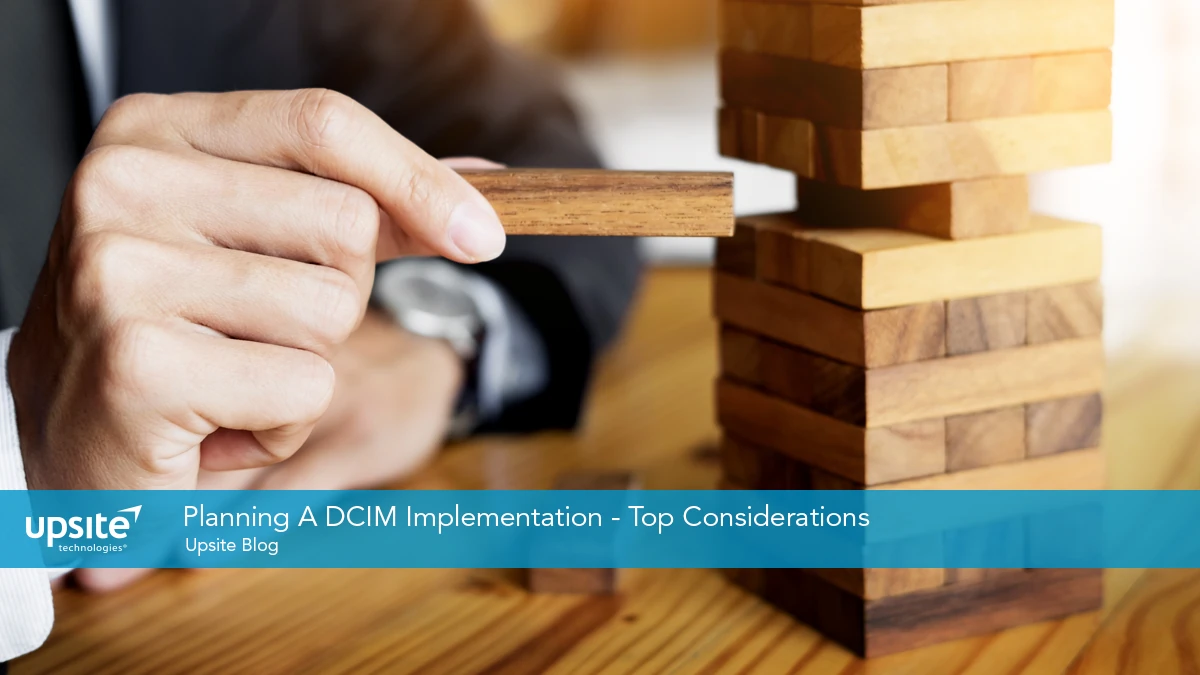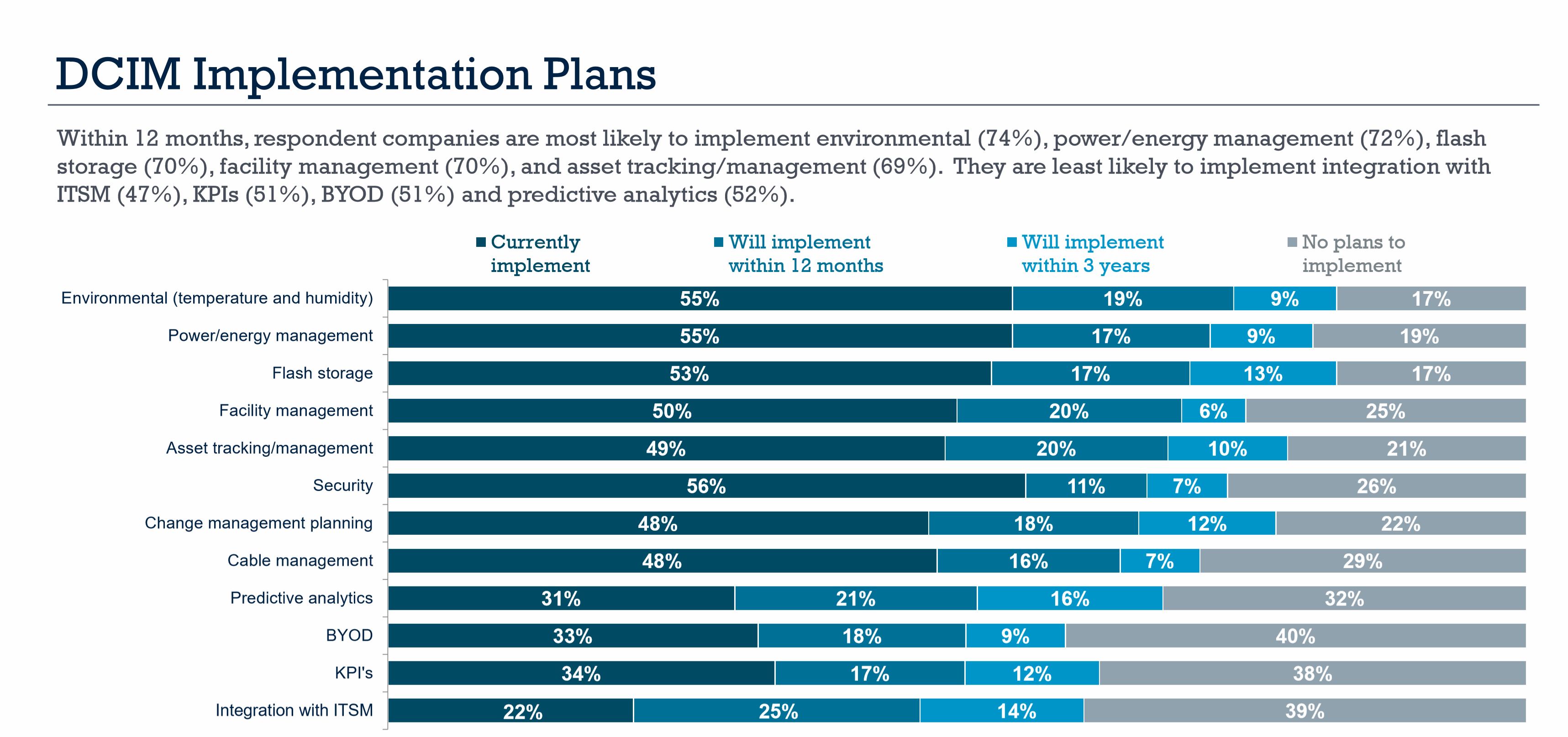Planning A DCIM Implementation – Top Considerations11 min read

A couple of years ago, the editor of Data Center Knowledge embarked on a journey to create the DCK DCIM Infocenter. During that project, I had the pleasure of evaluating and writing reviews regarding a variety of DCIM vendors.
Well, between now and then – much has changed. Today, DCIM is an even more integrated part of the data center, boasting new solutions like AI, machine learning, and much more. Efficiently evolving DCIM tools are the bridge into the ‘smart’ data center.
Consider this, a recent report from Global Industry Analysts indicates that the global market for DCIM is projected to reach $1.9 billion by 2020. DCIM growth will be driven by the convergence of technologies like cloud computing, virtualization, Web 2.0, Internet of Things (IoT), and Software as Service (SaaS) and the ensuing complexity of data centers. The United States represents the most significant market worldwide. Growth in the market is driven by benefits such as the ability to create a centralized, single pane system for loss-less data collection; scale management from hundreds to thousands of data center assets; perform real-time analysis and gain high impact administration awareness.
Now, let’s shift gears and look at the AFCOM State of the Data Center report. In their report, we found some exciting goals and initiatives when it came to DCIM implementation planning. So what are organizations looking to deploy?

DCIM Implementation Plans
Take a look at that Top Five list. DCIM continues to impact more of the evolving data center model and aims to embed itself as a powerful tool beyond just overall data center management.
- Environmental (temperature and humidity). Working with data center environments will always be a critical concern as well as exploring new solutions which will impact how we design our future data center. New technologies such as solid-state have different operating temperatures than their spinning disk counterparts. The latest metrics show that regularly operating in the recommended 64.4F and 80.6F range, which is based on the ANSI/ASHRAE Standard 90.4-2016, will keep your data center nice and healthy. However, what about efficiency? DCIM aims to make environmental data center management simpler. To that extent, they are now integrating with advanced technologies to create even more value. In your own data center, take the right design approaches to ensure you have cooling, temperature, and humidity in check.
- Power/energy management. Consider this, Gartner estimates that ongoing power costs are increasing at least 10% per year due to cost per kilowatt-hour (kWh) increases and underlying demand, especially for high power density servers. Approximately 10% of data center operating expenditure (OPEX) is power, and power is likely to be about 15% of data center OPEX within five years. Furthermore, the AFCOM State of the Data Center report indicated that the majority of respondents report rack power density is increasing. The estimated mean-target rack-power-density is 7.3 kW. In working with your own data center, be sure to leverage good DCIM features which allow you to manage your rack density more efficiently and help you bring down that PUE.
- Flash storage. DCIM solutions are now integrating deeper into specific infrastructure components. One of these solutions is the very popular all-flash array. A recent Forrester study (commissioned by Pure Storage) took a deeper dive into the economic impacts of all-flash on the modern data center. Throughout the study, Forrester found that power and cooling savings totaled $74,231 over three years and assumed a cost per kWh for the power of $0.14 and a cost per KWH for cooling of $0.10. Moreover, with the increase of rack density – solutions like all-flash can give you a competitive advantage. DCIM helps you dive deeper into the analytics behind rack density and power efficiency. This is why DCIM is becoming a crucial part of the planning and deploying storage solutions.
- Facility management. Our racks and data centers are getting a lot smarter. Let me give you an example, Raritan has recently come out with a line of ‘smart racks’ which take environmental monitoring to the next level. These datacenter-ready IoT technologies are tested to withstand billions of hours of runtime in the world’s most data-intensive environments. One of those IoT components is environmental sensors located throughout the rack. These sensors help isolate hotspots, optimize cooling, prevent downtime, and maintain security with integration with smart locks. Furthermore, these IoT devices gather data, which then feeds into a DCIM platform allowing data center and business leaders to make better decisions. DCIM integration with facility management is designed to help you manage the facility of tomorrow. One that is much more connected and contains many new kinds of smart data center devices.
- Asset tracking/management. With new concepts like edge, cloud, IoT, and even converged infrastructure, asset tracking and management continue to be very important DCIM features. The distribution of IT has also created a few challenges regarding managing key assets. Integration with DCIM will allow you to keep track of your infrastructure and ensure that your assets are being properly utilized. A massive cost center for the data center is the mismanagement of core assets, how they are distributed, and where they are leveraged. DCIM helps make this entire process more accessible and more proactive. A good asset tracking and management feature set will help you retire older gear; make sure things are kept updated, and ensure nothing goes missing.
Although we do not see massive amounts of adoption regarding things like predictive analytics, they are definitely on the way. In fact, working with data, machine learning, and better ways to make decisions around infrastructure will all become a part of the DCIM package. Remember, these tools are never stationary. As you create your own data center management platform – always look ahead to know which types of solutions can benefit your business, overall operations, and your users.

Bill Kleyman
Industry Analyst | Board Advisory Member | Writer/Blogger/Speaker | Contributing Editor | Executive | Millennial
Bill Kleyman is an award-winning data center, cloud, and digital infrastructure leader. He was ranked globally by an Onalytica Study as one of the leading executives in cloud computing and data security. He has spent more than 15 years specializing in the cybersecurity, virtualization, cloud, and data center industry. As an award-winning technologist, his most recent efforts with the Infrastructure Masons were recognized when he received the 2020 IM100 Award and the 2021 iMasons Education Champion Award for his work with numerous HBCUs and for helping diversify the digital infrastructure talent pool.
As an industry analyst, speaker, and author, Bill helps the digital infrastructure teams develop new ways to impact data center design, cloud architecture, security models (both physical and software), and how to work with new and emerging technologies.
1 Comment
Submit a Comment
Airflow Management Awareness Month
Free Informative webinars every Tuesday in June.
Throughout the planning process, review all of your data center documentation with your vendor and outline your goals. If a specific piece of equipment needs data connections for water temperatures and flow rates or air flow data, confirm that the vendor can add sensors before the DCIM implementation.